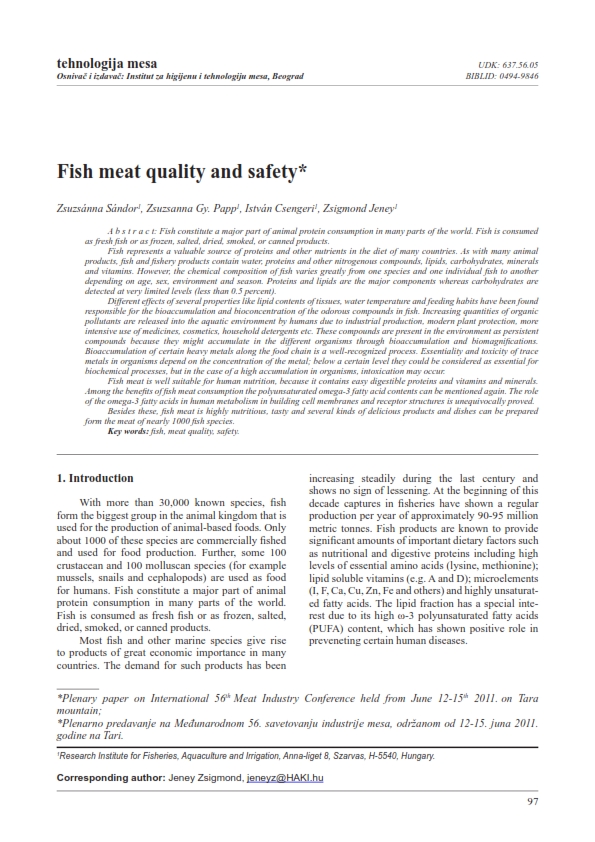Fish meat quality and safety
Abstract
Fish constitute a major part of animal protein consumption in many parts of the world. Fish is consumed as fresh fish or as frozen, salted, dried, smoked, or canned products. Fish represents a valuable source of proteins and other nutrients in the diet of many countries. As with many animal products, fish and fishery products contain water, proteins and other nitrogenous compounds, lipids, carbohydrates, minerals
and vitamins. However, the chemical composition of fish varies greatly from one species and one individual fish to another depending on age, sex, environment and season. Proteins and lipids are the major components whereas carbohydrates are detected at very limited levels (less than 0.5 percent). Different effects of several properties like lipid contents of tissues, water temperature and feeding habits have been found responsible for the bioaccumulation and bioconcentration of the odorous compounds in fish. Increasing quantities of organic pollutants are released into the aquatic environment by humans due to industrial production, modern plant protection, more intensive use of medicines, cosmetics, household detergents etc. These compounds are present in the environment as persistent compounds because they might accumulate in the different organisms through bioaccumulation and biomagnifications. Bioaccumulation of certain heavy metals along the food chain is a well-recognized process. Essentiality and toxicity of trace metals in organisms depend on the concentration of the metal; below a certain level they could be considered as essential for biochemical processes, but in the case of a high accumulation in organisms, intoxication may occur. Fish meat is well suitable for human nutrition, because it contains easy digestible proteins and vitamins and minerals. Among the benefits of fish meat consumption the polyunsaturated omega-3 fatty acid contents can be mentioned again. The role of the omega-3 fatty acids in human metabolism in building cell membranes and receptor structures is unequivocally proved.
Besides these, fish meat is highly nutritious, tasty and several kinds of delicious products and dishes can be prepared form the meat of nearly 1000 fish species.
Key words: fish, meat quality, safety.





